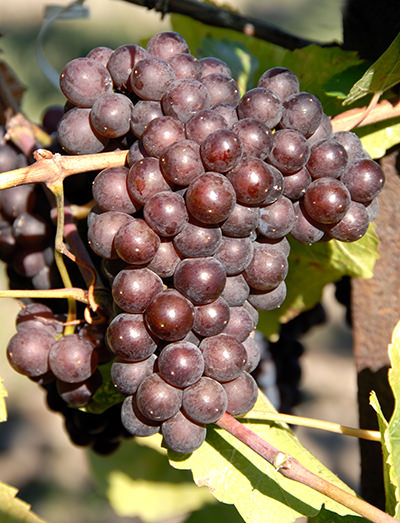No matter what your wine tastes are like, there’s a good shot you’re a fan of at least one member of the Pinot family. Pinot, one of the oldest grape varieties, is the mother category for Pinot Noir, Pinot gris/grigio, and Pinot Blanc. Each of these Pinot grapes rock, but are they actually different from one another? Well, kind of. Pinot Grigio and Pinot Blanc result from mutated Pinot Noir grapes. So how exactly does that work?
Each of these Pinot varieties begins as identical vine stock. Within a grapevine, two genes spur biochemical reactions called athocyanins. When athocynanins are active, they account for the red pigment that gives Pinot its deep-hued violet color. However, when a mutation causes them to be inactive, the tint is gone and the Pinot is blanc (white).

Nearly all Pinot Noir grapevines have both active and inactive chromosomal regions that contain these “pigment” genes. Sometimes, however, an inactive chromosomal region replaces an active one. What this means is that cells of Pinot Blanc emerge from a Pinot Noir plant. To sum it up? When you’re drinking Pinot Blanc, you’re drinking the result of a mutated Pinot Noir plant.
Now, let’s talk about Pinot Grigio. After the Pinot Noir cells are affected, the mutations multiply to form a cell layer in the Pinot Noir plant’s shoot. The result is called chimeric plant, and it’s how we get Pinot gris, the middle man between Pinot Noir and Pinot Blanc. A Pinot Noir skin surrounds the cells that have mutated to Pinot Blanc. It doesn’t quite have the dark purple color of Pinot Noir, but it’s not greenish white, like Pinot Blanc. Instead, it’s a ruby red color.

In essence, though you may prefer one Pinot to another, you can thank Pinot Noir for all the other Pinots. Pinot Noir is a crowd-pleasing red, full of berries and earthy flavors that fit into the “Forest Floor” category of tastes. Pinot Blanc is high in acidity, fruity, with floral and mineral qualities. And lastly, Pinot Grigio has that same acidity, with refreshing citrus and apple notes. So despite the fact that the white Pinots are mutations of Pinot Noir, if you’ve had one Pinot, you definitely haven’t tried ‘em all.
(h/t The Conversation)

